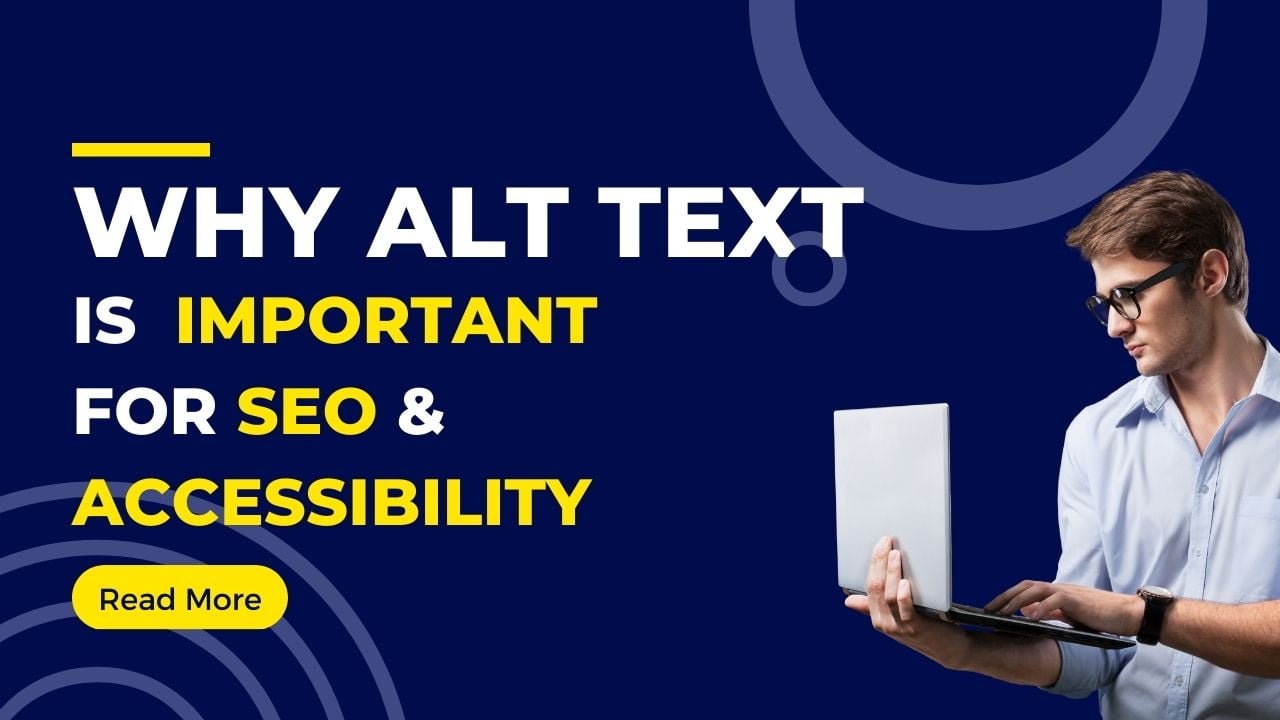Alt text, or alternative text, is a word or phrase that can be added to an image’s HTML code to provide a text equivalent for search engines and screen readers. While alt text is often thought of in terms of SEO and accessibility, it serves several important purposes. In this article, we’ll discuss why alt text is important for SEO and accessibility, and how to use it effectively on your website.
First and foremost, alt text is important for SEO because it helps search engines understand the content of an image. When search engines crawl the web, they are unable to “see” images in the same way that humans can. Instead, they rely on the text surrounding the image and the alt text to understand its content. By including descriptive and relevant alt text, you can help search
engines understand the context in which the image is being used, which can improve the visibility of your site in search results.
Alt text is also important for accessibility. Screen readers, which are used by people who are visually impaired or blind, rely on alt text to describe images to the user. Without alt text, screen readers are unable to provide a description of the image, which can make it difficult for users to understand the context and content of the page. By adding alt text to your images, you can make your site more accessible and user-friendly for people with disabilities.
In addition to its SEO and accessibility benefits, alt text can also be useful for users who have slow internet connections or are using devices with small screens. When an image takes a long time to load or is displayed at a small size, the alt text can provide users with a summary of the image’s content while they wait for it to fully load.
So, how do you write effective alt text? Here are a few tips to keep in mind:
- Keep it short and to the point. Alt text should be brief and concise, typically no more than a few words. Avoid using long phrases or sentences, as this can be confusing for screen readers and may take up too much space on small screens.
- Use descriptive language. Alt text should clearly and accurately describe the content of the image. Avoid using generic terms like “image” or “picture,” and instead use specific and descriptive language. For example, “A photograph of a golden retriever playing fetch in a park” is more descriptive than “A dog playing fetch.”
- Don’t stuff keywords. While it’s important to include relevant keywords in your alt text, avoid keyword stuffing or adding irrelevant keywords in an attempt to manipulate your search ranking. This can actually hurt your SEO and make your site less accessible.
- Use alt text for decorative images. If an image is used purely for decorative purposes and has no meaningful content, you should still include alt text. In this case, the alt text should be left blank or set to null (alt=””). This will prevent screen readers from reading out unnecessary or irrelevant information.
- Test your alt text. It’s important to test your alt text to ensure that it is being properly read by screen readers and displayed correctly on different devices and browsers. This can help you identify any issues and make necessary adjustments.
In addition to helping search engines understand the content of an image, alt text also has several other benefits for SEO.
- Improved accessibility: As mentioned previously, alt text helps make your site more accessible for users with disabilities, which can have a positive impact on your SEO. Search engines prioritize sites that provide a good user experience, and this includes sites that are accessible to all users.
- Increased visibility in image search: Alt text can also help improve your visibility in image search results. By including relevant and descriptive alt text, you can increase the chances that your images will appear in image search results, which can drive additional traffic to your site.
- Enhanced site structure: Properly formatted alt text can also help search engines understand the structure and hierarchy of your site. This can make it easier for search engines to crawl and index your pages, which can improve your overall search visibility.
- Improved user experience: Alt text can improve the user experience on your site by providing a clear and concise description of images for users who may be unable to see them. This can help keep users engaged with your content and reduce bounce rates, which can have a positive impact on your search ranking.
Overall, adding alt text to your images is an important aspect of SEO and can help improve the visibility and accessibility of your site. By including descriptive and relevant alt text, you can help search engines understand the content of your site and provide a better user experience for all users.
In conclusion, alt text is an important aspect of SEO and accessibility. By adding descriptive and relevant alt text to your images, you can help search engines understand the content of your site and make it more accessible for users with disabilities. By following the tips outlined above, you can write effective alt text that helps improve the user experience on your site.

